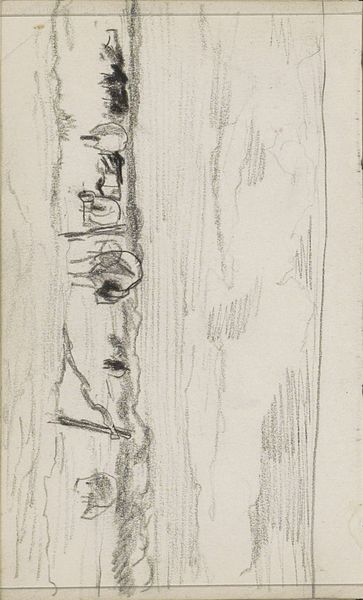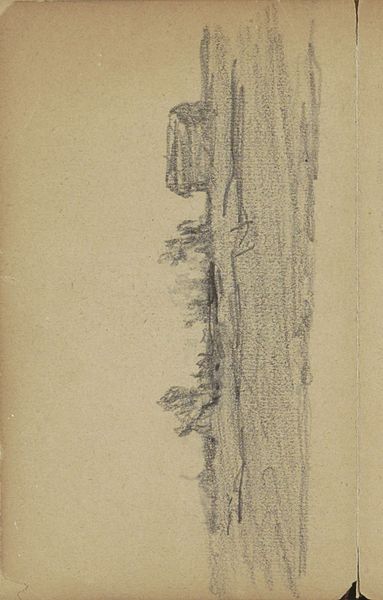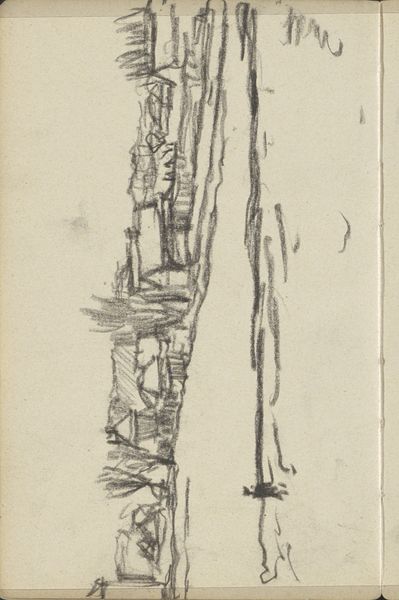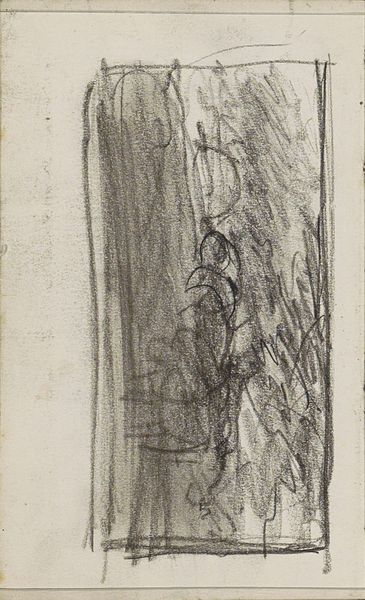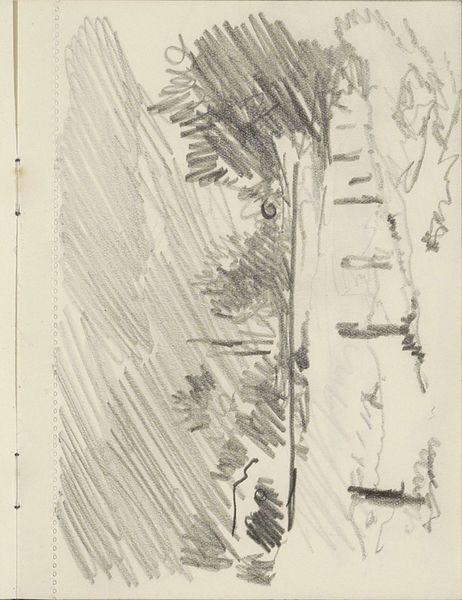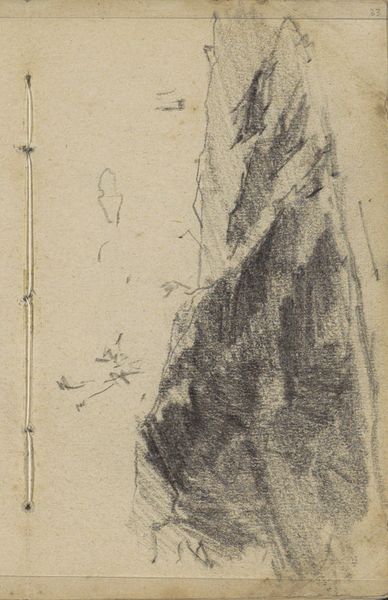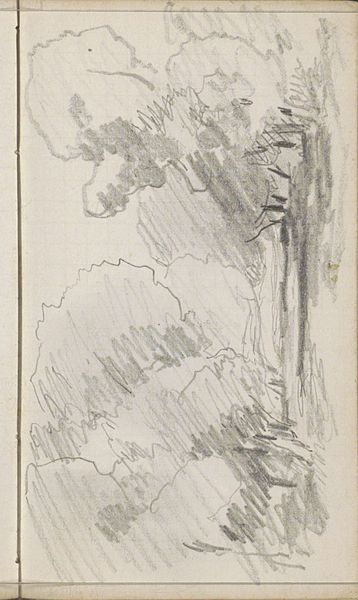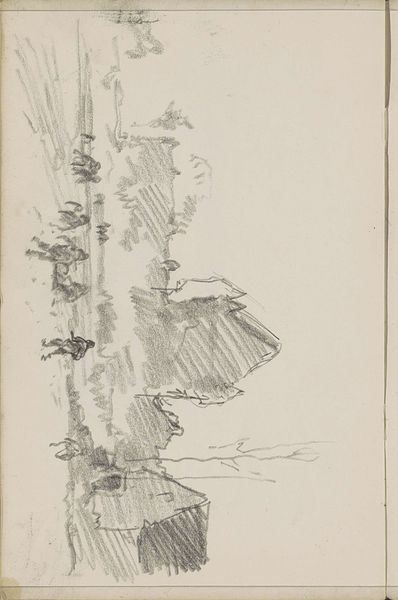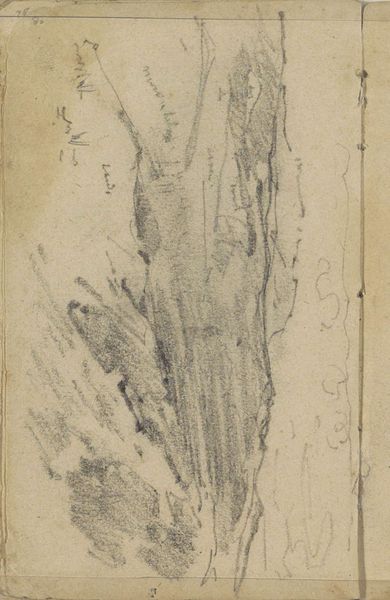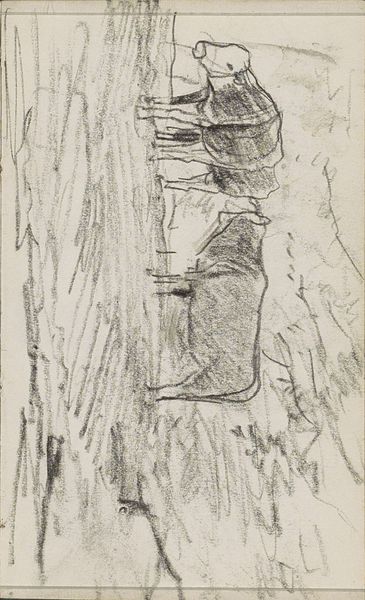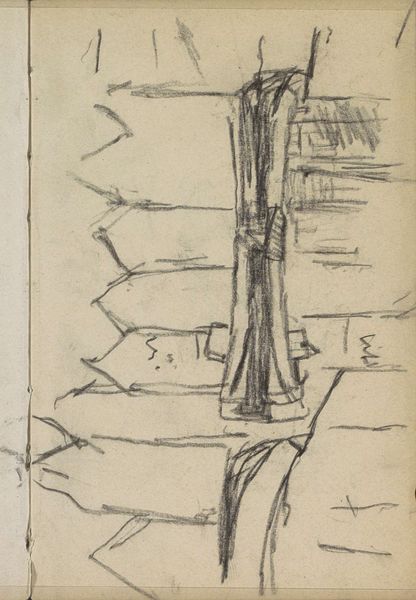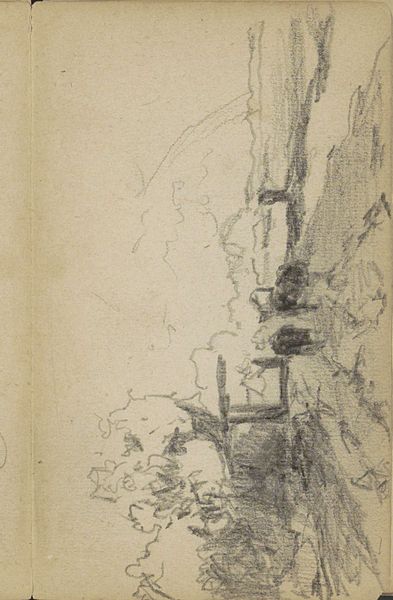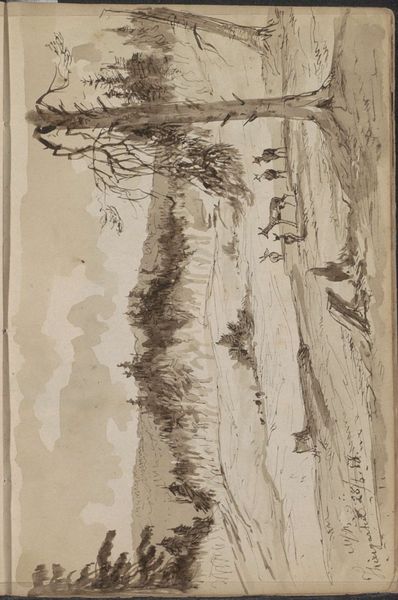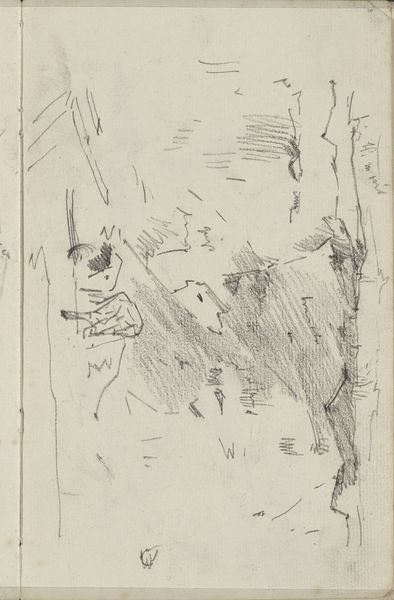
drawing, pencil
#
drawing
#
impressionism
#
pencil sketch
#
landscape
#
pencil
#
realism
Copyright: Rijks Museum: Open Domain
Editor: So, this is “Geploegd veld naast een groep bomen,” or "Plowed Field Next to a Group of Trees," by Anton Mauve, made sometime between 1848 and 1888. It's a pencil drawing. There's a real simplicity to it, almost stark in its use of black and white. What's your read on this piece? Curator: It's interesting to consider the labor inherent in this seemingly simple landscape. Look at the marks themselves—the pressure applied, the texture of the paper visibly affecting the line. Mauve isn't just depicting a field; he's recording a process. Think about what tilling the soil *meant* then—the social structures involved, the sheer physicality. Does the sketch capture this physicality, or is it more distanced? Editor: I see what you mean about recording a process. I hadn't thought about it like that. So, you're saying it's not just about the trees and field but about the human effort that shaped it? The labor involved in creating farmland? Curator: Precisely! And consider the medium. Pencil is readily available, relatively cheap. What does that suggest about accessibility, about Mauve’s intention perhaps to democratize representation of the landscape and the people who worked on it? Editor: It's a very different way to think about a landscape drawing! I usually consider composition and light, but the focus on the materials and the implications of depicting labor… Curator: Exactly. We're invited to think beyond just the aesthetic surface and delve into the means of its production, the social context from which it springs. How does that change your perception of the drawing? Editor: It makes me think more about the story *behind* the image. About who benefits from the land, and who toils on it. I will never look at simple drawing the same way again. Curator: Wonderful! That materialist approach gives us tools to understand deeper social narratives. It’s about deconstructing art’s process and seeing the labor embedded within it.
Comments
No comments
Be the first to comment and join the conversation on the ultimate creative platform.
